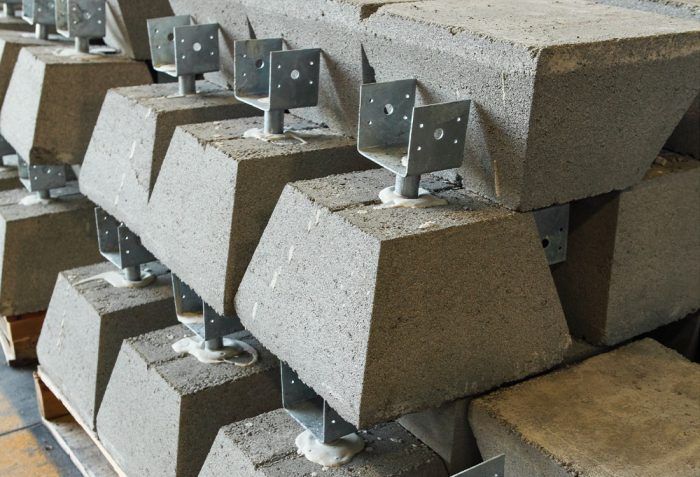Precast Piers and Other Footing Options
Pin footings and store-bought concrete piers are a couple of low-impact alternatives to traditional poured-on-site deck footings.

Most deck builders use a concrete-filled hole as the footing, but other options exist. One interesting system is a pin footing by Diamond Pier®. This system is designed for limited impact on the surrounding landscaping during installation. The pier has a reinforced concrete anchor block with guide holes built into it. Pins are driven through these holes into the ground with a demolition hammer. The size of the pin or pipe is determined by the bearing capacity of the soil. Helical piers can also save a lot of digging, but they are not available in all regions (they require installation by a specialty contractor). The system works well in locations with poor soil quality or a high water table.

Many building stores offer precast concrete deck piers. These piers usually come with a fitted recess in the top of the pier that receives the 4×4 deck post or with a metal saddle that serves the same function. Back when decks were considered play structures that could be built any way possible, these precast piers were a great time-saver. There was no need to dig a hole or mix a bunch of concrete when you could just spread these piers around and start building. Nowadays precast piers don’t offer the same convenience because, no matter the depth of the frost line, deck footings have to rest on undisturbed soil, which will require some amount of excavation to get to. These piers must also be sized correctly to support the deck and to resist lateral forces. That’s not to say that these piers cannot be used, but if you drag 10 of them off the shelf of your local home store before checking your deck design against local code, you might have to drag them right back to the home store because they won’t work for your project.





